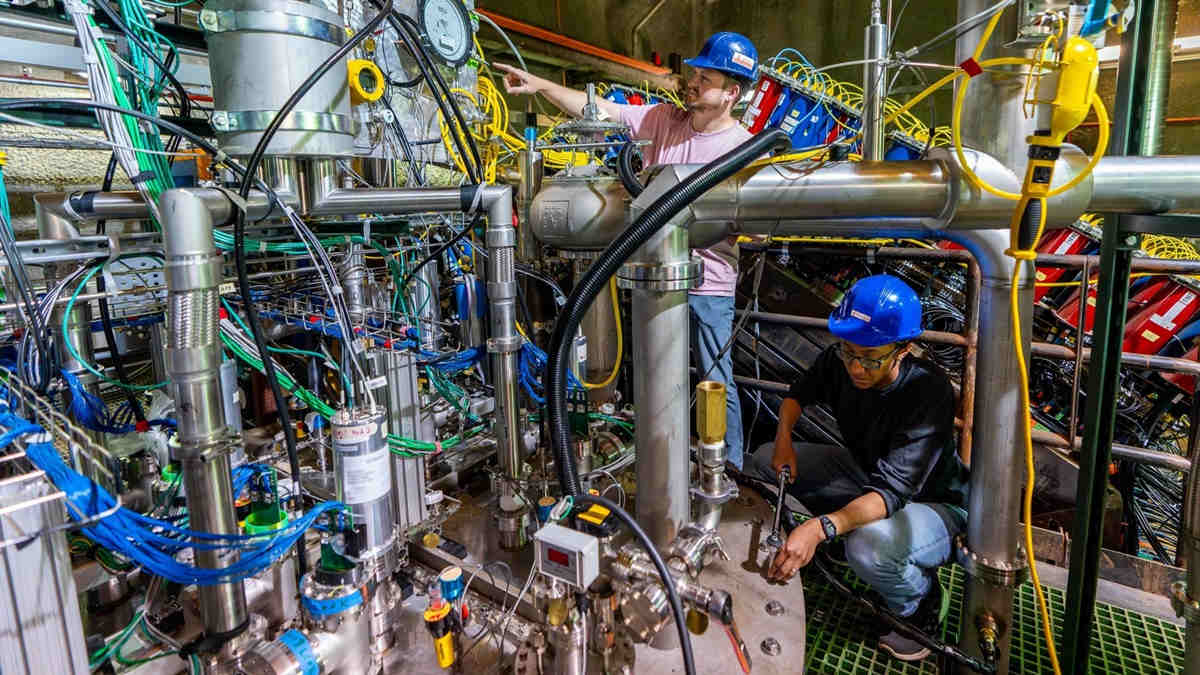Fermilab scientists have taken a major step forward as they work to get the Deep Underground Neutrino Experiment (DUNE) operational.
DUNE is a prototype particle accelerator at the US Department of Energy’s Fermi National Accelerator Laboratory. Once finished, the new detector will be the most comprehensive neutrino experiment in the world.
Its goal is to explore the fundamental questions and biggest mysteries of the universe such as the origin of matter and the formation of supernovae and black holes.
To do this, the 1,400 scientists and engineers working on DUNE are creating the world’s most intense beam of high energy neutrinos.
Neutrinos are fundamental subatomic particles. They are so light – hundreds of thousands of times less massive than the next smallest particle, the electron – that they zip through the universe at the speed of light.
They are also extremely difficult to detect as they interact very weakly with other matter particles, moving straight through them. In fact, about 100 trillion neutrinos just passed through your body in the last second. This has earned them the nickname “ghost particle”.
The final version of DUNE will have 35 liquid argon time projection chambers which will allow scientists to track the movements of particles and determine their physical properties.
Currently, DUNE is up to its 2×2 prototype phase because it has 4 liquid argon modules arranged in a square.
Such a modular liquid-argon detector capable of detecting high-energy neutrinos and antineutrinos has never been build or tested before.
DUNE’s detection of neutrinos for the first time is announced in a Fermilab news release.
“This is a truly momentous milestone demonstrating the potential of this technology,” says Fermilab scientist Louise Suter. “It is fantastic to see this validation of the hard work put into designing, building and installing the detector.”
From here, DUNE has been switched to antineutrino mode to study the interactions between the liquid argon and the neutrino’s antimatter counterpart, the antineutrino.
Interactions between the antineutrino and argon will produce other particles. The scientists will study what kinds of particles are produced and how often. This will prepare the physicists to compare the neutrino and antineutrino detections using DUNE.


















![Ep265: [Lean Series] 5 Ways You’re F*cking Up Your Fat Loss Ep265: [Lean Series] 5 Ways You’re F*cking Up Your Fat Loss](https://carrotsncake.com/wp-content/uploads/2025/01/IMG_3025-768x1024-1.jpg)
.png)

Discussion about this post